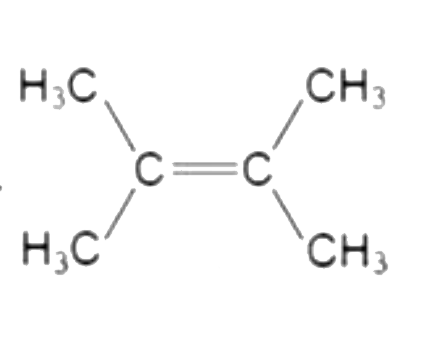(A)(Hydrated salt)Storngly−−−−→heatedB+Ctransparentglassy bead
H3BO3Strongly−−−−→heatedC+D
Identify C-
(BN)x
NaPO3
B2O3
Mg(NH4)PO4
The correct Answer is:C
To identify compound C in the given reactions, we will analyze the two reactions step by step.
Step 1: Analyze the first reaction
The first reaction involves a hydrated salt (compound A) that, when heated strongly, produces two products: a transparent glassy bead (compound B) and another compound (compound C).
- Hydrated Salt (A): Let's assume it is Sodium Tetraborate Decahydrate, which has the formula Na2B4O7⋅10H2O.
- Heating Reaction: When heated, this hydrated salt decomposes to form:
Na2B4O7⋅10H2Oheat−−→2NaBO2+B2O3
From this reaction:
- Compound B: NaBO2 (Sodium Metaborate)
- Compound C: B2O3 (Boron Trioxide)
Step 2: Analyze the second reaction
The second reaction involves the compound H3BO3 (Boric Acid), which when strongly heated, produces compound C and another product (compound D).
- Heating Reaction: The reaction can be written as:
H3BO3heat−−→B2O3+H2O
From this reaction:
- Compound C: Again, we find B2O3 (Boron Trioxide)
- Compound D: H2O (Water)
Conclusion
From both reactions, we can conclude that compound C is B2O3 (Boron Trioxide).
Final Answer
C = B2O3
---
The first reaction involves a hydrated salt (compound A) that, when heated strongly, produces two products: a transparent glassy bead (compound B) and another compound (compound C).
- Heating Reaction: When heated, this hydrated salt decomposes to form:
Na2B4O7⋅10H2Oheat−−→2NaBO2+B2O3
From this reaction:
- Compound B: NaBO2 (Sodium Metaborate)
- Compound C: B2O3 (Boron Trioxide)
The second reaction involves the compound H3BO3 (Boric Acid), which when strongly heated, produces compound C and another product (compound D).
H3BO3heat−−→B2O3+H2O
From this reaction:
- Compound C: Again, we find B2O3 (Boron Trioxide)
- Compound D: H2O (Water)
From both reactions, we can conclude that compound C is B2O3 (Boron Trioxide).
C = B2O3
Topper's Solved these Questions
- INORGANIC CHEMISTRYBOOK - ALLENCHAPTER - INORGANIC CHEMISTRYEXERCISE - s-BLOCK ELEMENTS
21 Videos
- INORGANIC CHEMISTRYBOOK - ALLENCHAPTER - INORGANIC CHEMISTRYEXERCISE - METALLURGY
22 Videos
- INORGANIC CHEMISTRYBOOK - ALLENCHAPTER - INORGANIC CHEMISTRYEXERCISE - COORDINATION COMPOUNDS & d-BLOCK COMPOUNDS (MATCH THE COLUMN)
2 Videos
- HYDROGENBOOK - ALLENCHAPTER - HYDROGENEXERCISE - EXERCISE-5
17 Videos
- Ionic EquilibriumBOOK - ALLENCHAPTER - Ionic EquilibriumEXERCISE - All Questions
37 Videos
Similar Questions
underset(("Hydrated salt"))((A)) underset("heated")overset("Storngly")tounderset("glassy bead")underset("transparent")ubrace(B+C)
H3BO3Strongly−−−−→heatedC+D
Find the number of tetrahedral and trigonal planar units in structure of A -
View Solution(A)(Hydrated salt)Storngly−−−−→heatedB+Ctransparentglassy bead
H3BO3Strongly−−−−→heatedC+D
Find the number of water of crystallizations in (A) :-
View Solution
Knowledge Check
CH3−CH3∣C∣CH3−C∣BrH3Major product (A) is CH3−EtoH−−→Δ(A)
A B
B C
C D
D
(A)(Hydrated salt)Storngly−−−−→heatedB+Ctransparentglassy bead
H3BO3Strongly−−−−→heatedC+D
How many X–O–X linkages are present in structure of A (X = central atom)-
View SolutionGive the IUPAC name of the compounds numbered i] to v].
(i)H−H∣C∣H−H∣C∣CH3−H∣C∣H−H∣C∣H−OH (ii)H−H∣C∣H−CH3∣C∣CH3−H∣C∣H−OH
(iii)H−H∣C∣H−Br∣C∣H−CH∣CH3−O∣∣C−OH (iv)H−H∣C∣H−H∣C∣CH3−H∣C∣H−H∣C=O
(v)H−H∣C∣H−H∣C∣CH3−O∣∣C−H∣C∣H−H
View SolutionCH3−CH3∣C∣CH3−C∣BrH−CH3El mechanism−−−−−−−−−−→Δ(A)
Major product (A) is
View SolutionIdentify and name the functional groups present in the following compounds.
(a) H−H∣C∣H−H∣C∣H−H∣C∣H−OH , (b) H−H∣C∣H−H∣C∣H−O∣∣C−OH
(c ) H−H∣C∣H−H∣C∣H−O∣∣C−H∣C∣H−H∣C∣H−H , (d) H−H∣C∣H−H∣C∣H−H∣C=H∣C−H
View SolutionIn the following reaction, three product a, b, c are obtained.
H3C−CH3| C | CH3−CH| OH−CH3H3PO4/heat−−−−−−−→H3−C−CH2| C | CH3−CH (a)=CH2+ +H3C−CH2||C−CH| CH2−CH3(c)
+H3C−CH2||C−CH| CH2−CH3(c)
View SolutionGive the IUPAC names of the compounds numbered (i) to (v)
(i)H−H∣C∣H−C=C−H[CH3−C≡CH] (ii)H−H∣C∣H−H∣C∣H−H∣C∣OH−H∣C∣H−H∣C∣H−H
(iii)H−H∣C∣H−H∣C∣H−C∣−HH−H∣C∣H−H (iv)H−H∣H∣H−O∣∣C∣OH (v)H−H∣C∣Cl−H∣C∣Cl−H
View SolutionIdentify the product A,B,C and D
C6H6CH3Cl−−−−−−−−→Anhyd. AlCl3ACrO2Cl2−−−−→CCl4BConc.−−−→NaOHC+D.
View Solution
